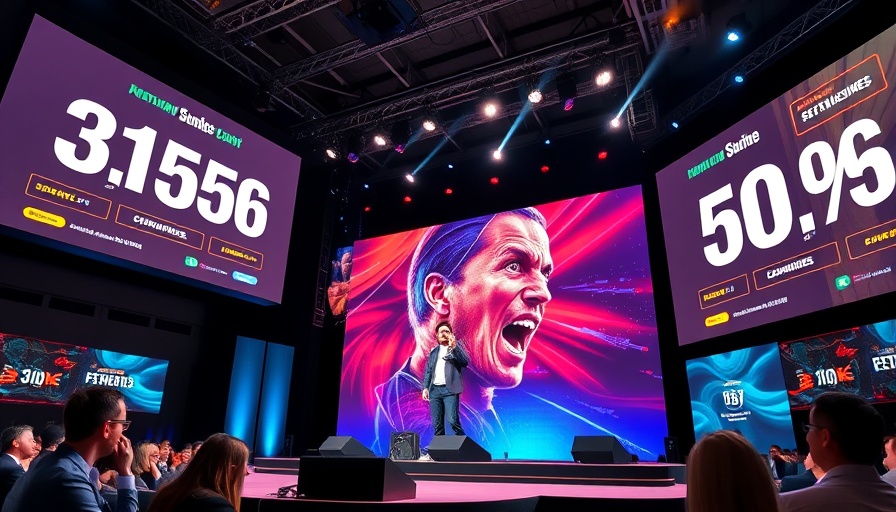
Unlocking the Power of AI in Advertising
As Amazon showcases its latest advertising innovations, small businesses have much to learn from its application of artificial intelligence (AI) in contextual ads. In an era where targeted marketing is essential, these new ad formats leveraging AI could redefine not only how big players among the likes of Amazon conduct advertising strategies but also how small businesses can optimize their outreach.
New Formats to Engage Consumers
Amazon recently introduced several innovative ad formats aimed at enhancing consumer engagement on Prime Video, which could serve as a roadmap for smaller advertisers. The new pause ad format dynamically creates contextually relevant ads that adapt to on-screen imagery, providing a more immersive experience for viewers. For instance, a scene depicting a character receiving relationship advice may serve an ad focused on heartwarming personal connections, such as one from T-Mobile. This creative approach to ad placement makes it an attractive avenue for small businesses aiming to personalize their advertising to resonate with the consumer's current emotional state.
Expanding Shopping Interests with Real-Time Data
Amazon is harnessing its vast data trove to create real-time shopping ads, allowing viewers to make purchases effortlessly with their remote. Small businesses can take a cue from this by developing ad campaigns that incorporate immediate purchasing opportunities - think live demos during online events or special promotions that pop up amidst relevant content. These quick actions can boost engagement and conversion rates, essential for small enterprises trying to thrive in competitive markets.
Non-Endemic Brands Gain Footing
The challenge often faced by businesses that aren’t directly selling on Amazon is also addressed through new interactive formats. These formats enable brands to engage in location-based messaging, lead generation, and direct call-to-action buttons like “book an appointment” or “get a quote.” Small businesses can leverage this by creating similar interactive experiences on their platforms, pushing consumers toward immediate action and facilitating broader engagement beyond just brand awareness.
Rethinking Target Audiences
With its monthly average ad-supported audience skyrocketing to over 300 million in the U.S., Amazon underscores the necessity for brands to think ambitiously about their target audience. For small businesses, this is a crucial reminder to expand their reach. Crafting targeted campaigns that appeal to larger demographics and utilizing platforms that offer extensive viewer bases could yield surprising results. Market research, perhaps driven by AI tools, can help craft messages that resonate across varied audience segments.
Conclusion: A Call to Embrace Innovation
The launch of these AI-powered ad formats from Amazon represents not only a step forward for digital advertising but also a crucial lesson for small business marketers. By infusing creativity and leveraging available data, small enterprises can compete effectively even in the realm of giants. Consider exploring new technologies and strategies to stay ahead in this evolving landscape. Actionable steps such as integrating AI-driven marketing techniques, personalizing consumer interactions, and employing data analytics will be essential as small businesses grow in this increasingly competitive environment.
 Add Row
Add Row  Add
Add 




Write A Comment